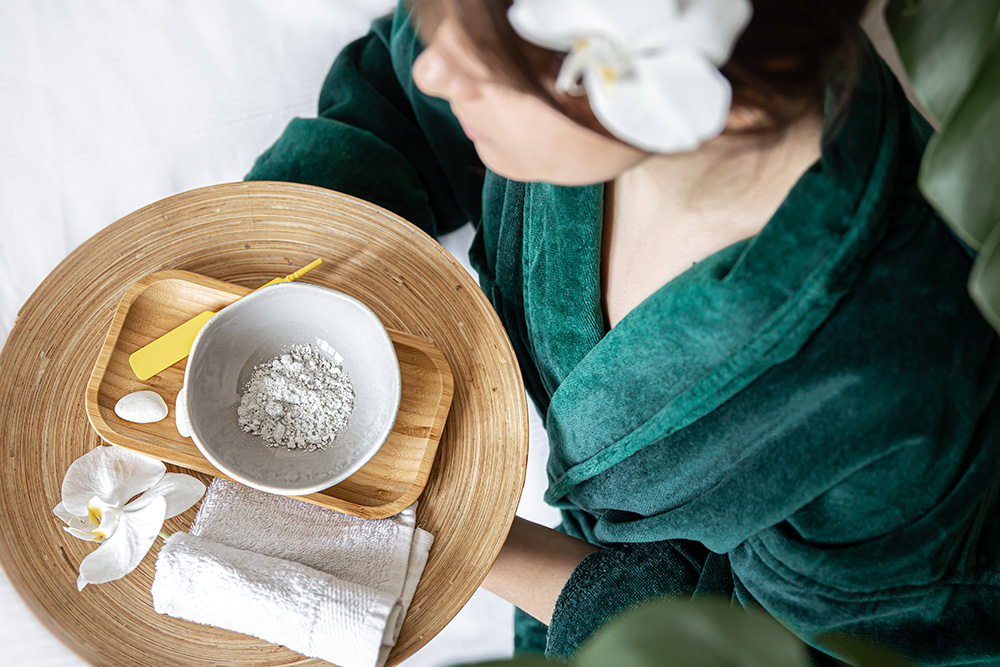
Maintaining healthy, glowing skin requires more than just a daily routine. Adding weekly skin care rituals to your regimen can help address specific concerns, promote cellular turnover, and keep your complexion looking its best. Whether you have oily, dry, combination, or sensitive skin, these five weekly practices will help you achieve and maintain a radiant complexion.
1. Exfoliate to Reveal Fresh Skin
Exfoliation is the process of removing dead skin cells from the surface of your skin, which can help unclog pores, even out skin tone, and improve texture. Depending on your skin type, you can choose between physical exfoliants (like scrubs) or chemical exfoliants (like alpha-hydroxy acids or AHAs) [1]. Aim to exfoliate 1-2 times per week, as over-exfoliating can lead to irritation and dryness.
2. Indulge in a Weekly Mask
Face masks are a great way to target specific skin concerns and boost your complexion's nourishment. For oily or acne-prone skin, look for clay masks that can help absorb excess oil and unclog pores. If you have dry or sensitive skin, choose hydrating masks with ingredients like hyaluronic acid or aloe vera [2]. Apply your chosen mask once a week, sit back, and let it work its magic.
3. Give Yourself a Facial Massage
Facial massages can help improve circulation, reduce puffiness, and promote lymphatic drainage. Once a week, take a few extra minutes during your skincare routine to give yourself a gentle facial massage. Use your fingertips or a facial roller to massage your favorite facial oil or moisturizer into your skin, using upward and outward motions [3]. Not only will this feel relaxing, but it can also help your skin look more radiant and sculpted.
4. Treat Yourself to a Steam Session
Steaming your face once a week can help open up your pores, allowing for deeper cleansing and better absorption of skincare products. Fill a bowl with hot water, add a few drops of your favorite essential oil (like lavender or eucalyptus), and hold your face over the steam for 5-10 minutes [4]. Follow up with your regular cleansing routine and a moisturizer to lock in the benefits.
5. Don't Forget Your Neck and Décolletage
The skin on your neck and décolletage is just as delicate as the skin on your face, but it's often neglected in skincare routines. Once a week, extend your skincare routine to these areas, applying your products in upward motions to combat gravity and keep the skin looking firm and youthful [5]. You can also use a neck-specific cream or serum to give these areas some extra TLC.
By incorporating these five weekly skincare rituals into your routine, you'll be on your way to achieving your healthiest, most radiant skin yet. Remember to always listen to your skin and adjust your routine as needed based on how your skin responds. With consistent care and attention, you'll be able to maintain a glowing complexion that looks and feels its best.
References
- Tang, S. C., & Yang, J. H. (2018). Dual Effects of Alpha-Hydroxy Acids on the Skin. Molecules, 23(4), 863. https://doi.org/10.3390/molecules23040863
- Mandal, A., & Agrahari, P. (2020). A Comprehensive Review on Face Masks. International Journal of Research in Pharmaceutical Sciences, 11(SPL1), 456-463. https://doi.org/10.26452/ijrps.v11iSPL1.2719
- Caberlotto, E., Ruiz, L., Miller, Z., Poletti, M., & Tadlock, L. (2017). Effects of a skin-massaging device on the ex-vivo expression of human dermis proteins and in-vivo facial wrinkles. PLOS ONE, 12(3), e0172624. https://doi.org/10.1371/journal.pone.0172624
- Kim, H. S., Yun, J. W., Shin, I. S., Lee, S. D., Yoon, M., & Kim, B. H. (2020). Effects of Facial Steaming on Skin Hydration, Sebum Secretion, and Skin Elasticity. Journal of Cosmetic Science, 71(1), 53-63. https://pubmed.ncbi.nlm.nih.gov/32045244/
- Fournier, N., Dahan, S., Barneon, G., Diridollou, S., Lagarde, J. M., & Gall, Y. (2001). Effects of topical retinaldehyde on the rhytides and the trophicity of the neck and décolleté skin. Journal of Cosmetic Science, 52(2), 119-128. https://pubmed.ncbi.nlm.nih.gov/11413496/
Latest Posts
-
1
-
2
-
3
-
4
-
5





